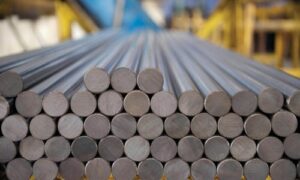In the world of materials engineering, choosing the right alloy for your application is crucial. 316 stainless steel round bars have earned a solid reputation for their exceptional properties, making them a top choice in various industries. In this comprehensive guide, we will delve into the wide range of applications that benefit from the use of 316 stainless steel round bars.
Understanding the Versatility of 316 Stainless Steel
Before we explore the specific applications, let’s gain a deeper understanding of why 316 stainless steel is a sought-after material.
Composition of 316 Stainless Steel
316 stainless steel is primarily composed of:
- Chromium (Cr): Provides corrosion resistance.
- Nickel (Ni): Enhances resistance to acids and high temperatures.
- Molybdenum (Mo): Increases corrosion resistance, particularly in chloride environments.
Now, let’s explore the diverse applications where 316 stainless steel round bars shine.
Applications in the Marine Industry
1. Boat Building and Marine Equipment
Corrosion Resistance in Saltwater
- 316 stainless steel’s exceptional corrosion resistance makes it the go-to choice for boat builders. It withstands the corrosive effects of saltwater, ensuring longevity and durability for marine vessels and equipment.
2. Offshore Oil and Gas Platforms
Challenging Environments
- Offshore platforms are subjected to harsh conditions, including saltwater exposure and high pressures. 316 stainless steel’s corrosion resistance and strength make it suitable for components like pipelines, valves, and structural elements.
Applications in the Chemical and Pharmaceutical Industries
3. Chemical Processing Equipment
Resistance to Chemical Corrosion
- The chemical industry relies on materials that can withstand aggressive chemicals. 316 stainless steel’s resistance to a wide range of acids and bases makes it ideal for tanks, reactors, and piping systems.
4. Pharmaceutical Manufacturing
Cleanliness and Sterility
- In pharmaceutical manufacturing, maintaining sterility is critical. 316 stainless steel’s ease of cleaning, non-reactive nature, and resistance to corrosion make it suitable for pharmaceutical equipment.
Applications in Food and Beverage Processing
5. Food Processing Equipment
Hygiene and Food Safety
- 316 stainless steel is a common choice for food processing equipment due to its non-reactive properties and ease of cleaning. It ensures food safety and meets strict hygiene standards.
6. Brewing and Distilling
Resistance to Alcohol and Acids
- In the brewing and distilling industry, 316 stainless steel is used for fermentation tanks and distillation columns. Its resistance to alcohol and acids is crucial for maintaining product quality.
Applications in Architecture and Construction
7. Architectural Elements
Aesthetic Appeal and Durability
- The polished appearance of 316 stainless steel lends itself well to architectural applications. It is used for decorative elements, handrails, and facades, combining aesthetics with durability.
8. Structural Components
Strength and Longevity
- 316 stainless steel’s strength and corrosion resistance are valuable in structural applications. It is used in bridges, building frameworks, and construction components where longevity is essential.
Applications in Medical and Healthcare
9. Surgical Instruments and Implants
Biocompatibility
- 316 stainless steel is biocompatible, making it suitable for surgical instruments and implants. Its non-reactive nature within the human body reduces the risk of adverse reactions.
10. Medical Equipment
Cleanliness and Hygiene
- Medical equipment, such as sterilization chambers and diagnostic devices, benefit from 316 stainless steel’s easy-to-clean surfaces and resistance to chemicals used in healthcare settings.
Applications in Automotive and Aerospace
11. Automotive Exhaust Systems
High-Temperature Resistance
- In automotive exhaust systems, where high temperatures and corrosive gases are prevalent, 316 stainless steel round bars excel due to their high-temperature resistance and corrosion resilience.
12. Aerospace Components
Lightweight Strength
- In the aerospace industry, where lightweight and high-strength materials are crucial, 316 stainless steel finds applications in aircraft components, ensuring both strength and corrosion resistance.
FAQ
Q1. Is 316 stainless steel the best choice for all marine applications?
While 316 stainless steel is highly corrosion-resistant and often used in marine environments, the specific alloy selection depends on factors like the type of water (salt or fresh), depth, and exposure to other corrosive agents.
Q2. Can 316 stainless steel round bars be used for high-temperature applications?
Yes, 316 stainless steel exhibits good high-temperature resistance. However, for extremely high-temperature applications, specialized alloys like Inconel may be preferred.
Q3. Is 316 stainless steel magnetic?
No, 316 stainless steel is generally non-magnetic due to its austenitic structure.
Q4. What maintenance is required for 316 stainless steel in corrosive environments?
Regular cleaning and maintenance can prolong the life of 316 stainless steel in corrosive environments. Avoiding abrasive cleaning agents and monitoring for signs of corrosion are essential practices.
Conclusion
The versatility and unique properties of 316 stainless steel round bars make them invaluable across a broad spectrum of industries. Whether it’s in the marine sector, chemical processing, food and beverage, architecture, healthcare, or aerospace, 316 stainless steel consistently proves its worth. It offers a combination of strength, corrosion resistance, and cleanliness that is essential for numerous critical applications. Understanding its benefits can empower engineers, manufacturers, and designers to make informed choices and select the right material for their specific needs.


